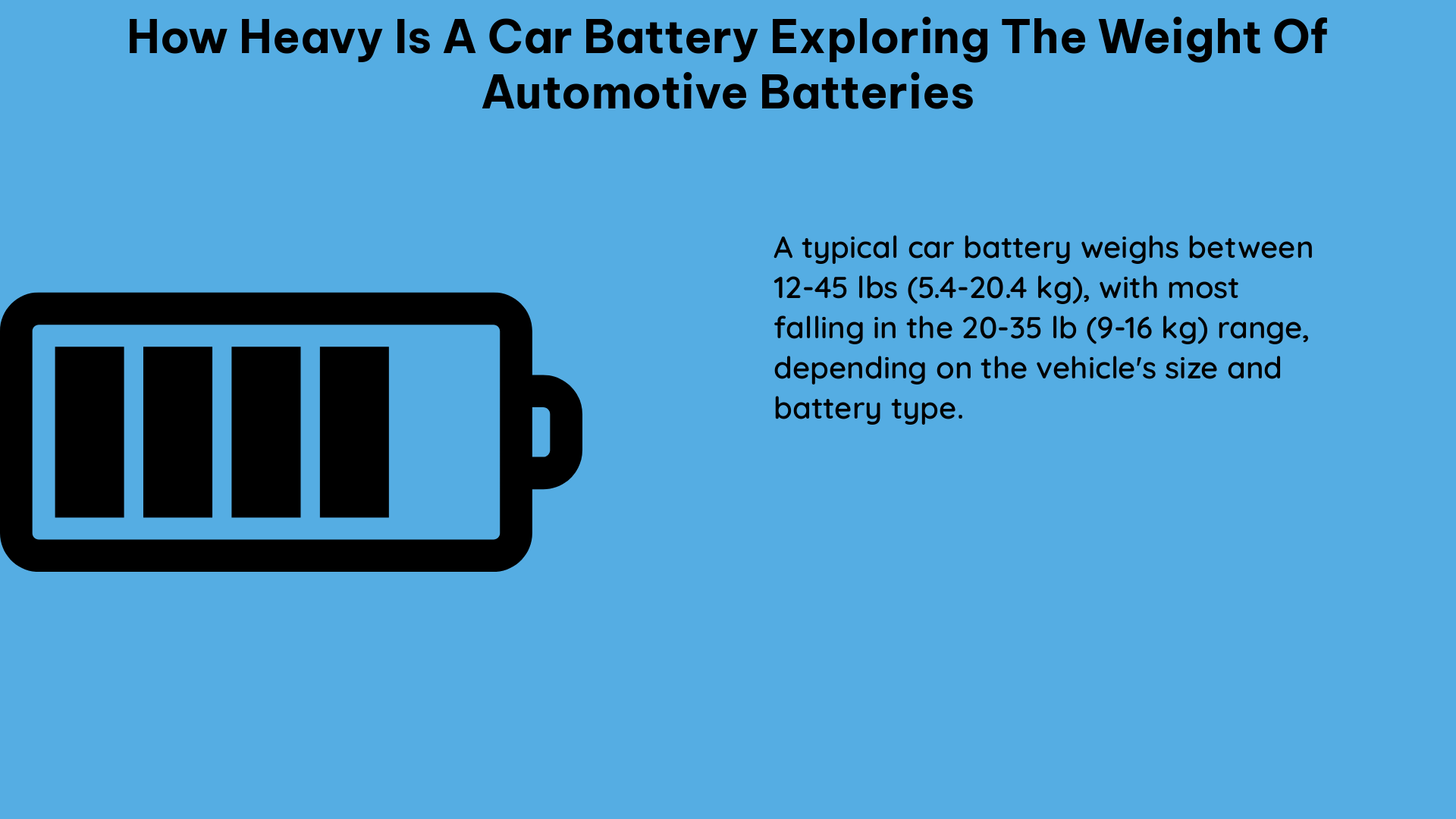Car batteries are an essential component of any vehicle, providing the necessary power to start the engine and keep all electrical systems running smoothly. Understanding the weight of a car battery is crucial for various reasons, including installation, maintenance, and performance optimization. This article delves into the details of car battery weights, focusing on their technical specifications, DIY considerations, and the broader implications for automotive design and efficiency.
Technical Specifications
The weight of a car battery depends on several factors, including its type, size, and chemistry. Here are some key technical specifications to consider:
Standard Car Batteries
Standard car batteries are the most common type found in cars, trucks, and SUVs. They typically weigh between 30 and 60 pounds (13.6 and 27.2 kg). The average weight of a standard car battery is around 40 pounds (18.1 kg). These batteries are usually made of lead-acid chemistry and are designed to provide the necessary power to start the engine and support the vehicle’s electrical systems.
Lightweight Batteries
Lightweight batteries are commonly used in small cars and electric vehicles. They can weigh between 10 and 25 pounds (4.5 and 11.3 kg), with some models weighing more. These batteries are often made of lithium-ion or lithium-polymer chemistry, which allows for a significant reduction in weight compared to traditional lead-acid batteries.
Electric Car Batteries
Electric car batteries are larger and heavier due to their role as the primary energy source for electric vehicles. The average electric vehicle battery weighs around 1,000 pounds (453.6 kg), but weights can range from 650 to 3,000 pounds (294.8 to 1,360.8 kg). These batteries are typically made of lithium-ion or lithium-polymer chemistry and are designed to provide the necessary power and range for electric vehicles.
Hybrid Car Batteries
Hybrid vehicles have two batteries: a standard 12-volt starter and an electric battery. The electric battery is much heavier and varies from model to model, typically weighing between 50 and 120 pounds (22.7 and 54.4 kg). These batteries are designed to work in conjunction with the internal combustion engine to improve fuel efficiency and reduce emissions.
DIY Considerations

When dealing with car batteries, it’s essential to consider their weight during installation, removal, and maintenance. Here are some DIY considerations to keep in mind:
Lifting Techniques
Car batteries can be heavy, so it’s crucial to use proper lifting techniques to avoid injury. Always lift with your legs, not your back, and use a battery carrier or hoist if available. For a standard 40-pound (18.1 kg) car battery, it’s recommended to use two people to lift and move the battery safely.
Battery Weight and Vehicle Type
The weight of a car battery can impact a vehicle’s performance, particularly in terms of acceleration and handling. Heavier batteries may provide more power but can also increase the overall weight of the vehicle, potentially affecting fuel efficiency and maneuverability. It’s essential to consider the battery weight when selecting a replacement or upgrading the battery in a vehicle.
Battery Maintenance
Regular battery maintenance, such as checking the fluid level and cleaning the terminals, can help ensure optimal performance and longevity. Be aware that removing and handling a heavy battery can be physically demanding, so take appropriate precautions. For a 40-pound (18.1 kg) car battery, it’s recommended to use a battery carrier or hoist to avoid straining your back.
Broader Implications for Automotive Design and Efficiency
The weight of a car battery has significant implications for automotive design and efficiency. Here are some factors to consider:
Battery Weight and Vehicle Range
In electric vehicles, a heavier battery can increase range but also adds to the overall weight of the vehicle, which can impact acceleration, handling, and energy efficiency. Manufacturers are constantly working to develop lighter and more energy-dense batteries to improve the performance and range of electric vehicles.
Battery Weight and Fuel Efficiency
In internal combustion engine vehicles, a heavier battery can negatively impact fuel efficiency due to the increased weight of the vehicle. However, advances in battery technology are helping to reduce battery weights while maintaining or even improving performance. For example, the use of lightweight lithium-ion batteries in hybrid and mild-hybrid vehicles has helped improve fuel efficiency.
Battery Weight and Electric Vehicle Adoption
As more consumers adopt electric vehicles, the weight and size of batteries will continue to be a critical factor in vehicle design and performance. Reducing battery weights while maintaining or improving performance will be essential for widespread electric vehicle adoption. Manufacturers are exploring various strategies, such as using advanced materials and optimizing battery pack designs, to address this challenge.
References
- EV Battery Weight: How Much Do Electric Vehicle Batteries Weigh?
- How Much Do Car Batteries Weigh?
- Car Battery Weight: How Much Does a Car Battery Weigh?
- How Much Does a Car Battery Weigh?
- ELI5: Why do car batteries weigh 20 times more than a laptop battery?

The lambdageeks.com Core SME Team is a group of experienced subject matter experts from diverse scientific and technical fields including Physics, Chemistry, Technology,Electronics & Electrical Engineering, Automotive, Mechanical Engineering. Our team collaborates to create high-quality, well-researched articles on a wide range of science and technology topics for the lambdageeks.com website.
All Our Senior SME are having more than 7 Years of experience in the respective fields . They are either Working Industry Professionals or assocaited With different Universities. Refer Our Authors Page to get to know About our Core SMEs.